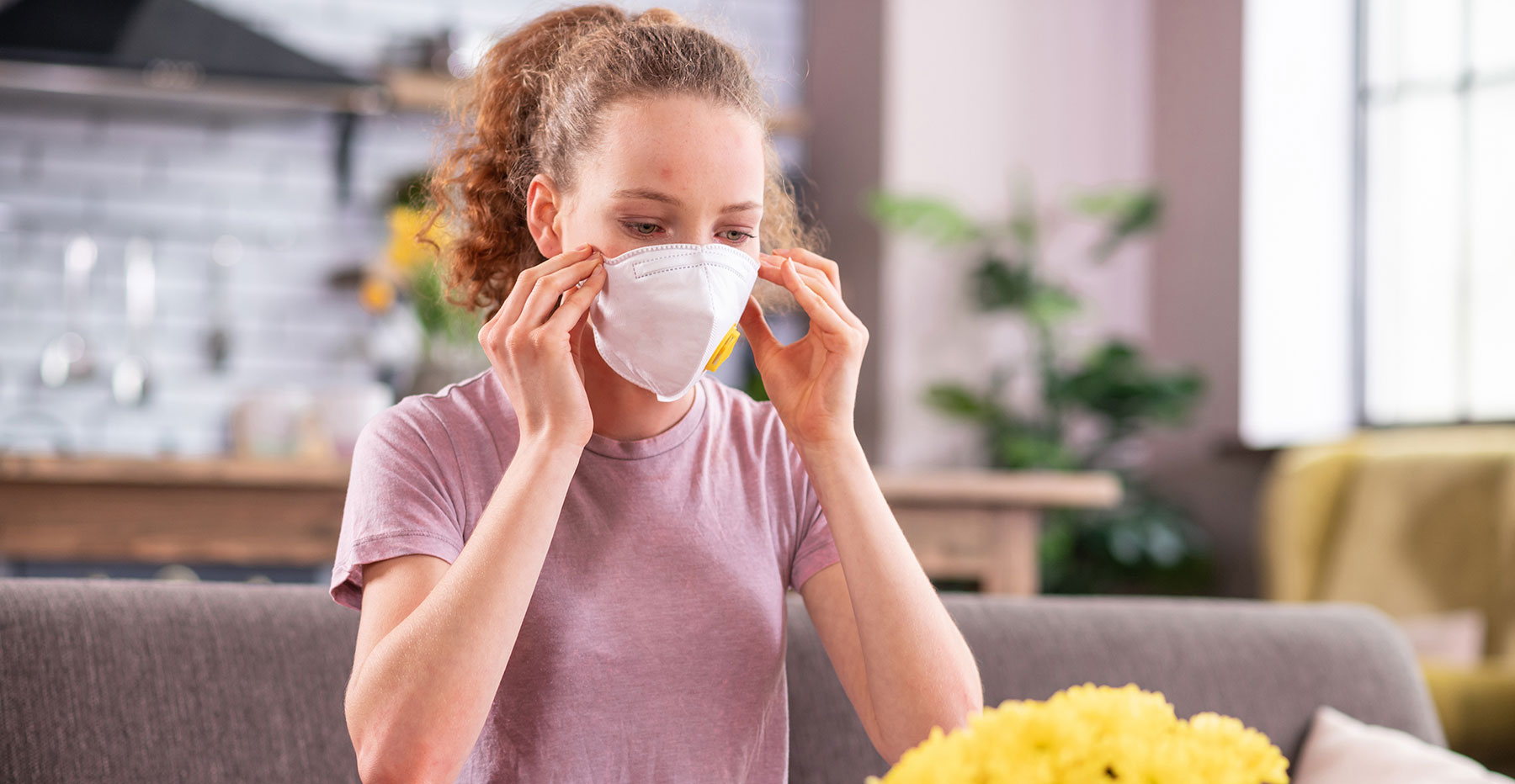Are Masks Making Your Skin Break Out?

Maybe you’ve noticed more pimples on your chin and nose since you started wearing a face mask regularly (per CDC COVID-19 guidelines). It’s such a common problem these days that the term “maskne” is now used to describe acne breakouts caused by masks. It makes sense because they can hold in heat and moisture, and used masks can harbor bacteria, dirt, oil, and dead skin cells.
You can treat and prevent these breakouts while continuing to protect yourself and others from the spread of COVID-19.
Get the right kind of mask, and keep it clean.
Avoid masks made from synthetic fabrics that may irritate your skin (like nylon, polyester, and rayon). If you wear cloth masks, get more than one. After each day of use, wash the mask with warm water and hypoallergenic soap or laundry detergent. If you prefer disposable masks, replace them daily.
It’s best to wash or sanitize your hands before you touch your mask to put it on, remove it, or adjust it. That can be hard to do throughout the day, so do your best to keep your hands clean and avoid touching your mask as much as possible.
Give your skin a breather.
If you need to wear a mask most of the day, take short breaks from mask-wearing when you’re able to safely physically distance from others or go outdoors. This will give your skin some welcome exposure to fresh air and a little sunshine (while wearing SPF 30 or higher).
To prevent pimples (when you’re wearing a mask or not), wash your face twice a day.
In the morning and before bed, use a gentle cleanser. If you’re experiencing breakouts, try one containing acne-fighting salicylic acid that’s non-abrasive. “Using an exfoliating scrub may actually aggravate acne,” says Jonette Keri, M.D. Ph.D., a dermatologist with the University of Miami Health System.
It’s a hard habit to break, but avoid touching your face throughout the day. Unless you’ve just washed your hands, they can transfer bacteria, dirt, and oils from your skin and hair onto your face.
Moisturize, moisturize, moisturize
You may assume that not moisturizing your skin is a good way to dry out pimples and slow oil production. But that can actually stimulate the oil glands and trigger breakouts. If you’re using a cleanser or spot treatment with salicylic acid or benzoyl peroxide, don’t use a moisturizer that also contains one of those ingredients. Doing that can dry out and irritate the skin.
After washing your face in the morning, apply an oil-free moisturizer. If you’re going to spend any time outside, even if it’s just commuting or running errands in your car, pick a moisturizer with SPF 15 or higher. Or, apply an oil-free, hypoallergenic sunscreen after your regular moisturizer is absorbed. Dr. Keri recommends SPF 30 or higher.
Before bed, apply a moisturizer that best suits your skin type: oil-free for oily skin, hydrating lotions for normal/combination skin, or richer creams for drier skin.
“The irritation from the mask rubbing the skin can compromise the skin’s natural barrier function,” says Dr. Keri. This can cause not only acne but also exacerbation of rosacea, a condition that causes red skin on the face with red papules (bumps). “Many of the patients coming in complaining of ‘maskne’ are actually having a flare-up of rosacea.
“Since barrier repair is important for both conditions, use the night as the time for skin repair. Apply a bland moisturizer to a clean face at bedtime. Even simple petrolatum before sleep will help a lot, and petrolatum is non-comedogenic, so it doesn’t clog pores,” she said.
Be gentle to your skin
This is not the time to try out new products and treatments to see what you can throw at your problematic skin. Irritating your skin can turn a couple of pimples into a recurring breakout. Avoid harsh skin treatments, aftershaves, cleansers, scrubs, chemical peels, and facial masks (including sheet masks, clarifying clay masks, and wrinkle-defense masks).
Limit your makeup application in the area of your face that’s covered by the mask. Focus on your eye makeup, and skip the lipstick. Use oil-free foundation, concealer, and powder.
When a pimple shows up, spot treat it with salicylic acid (which helps unclog pores) or benzoyl peroxide (which kills pimple-causing bacteria but can be more irritating than salicylic acid). Don’t use any acne-fighting products on skin that’s broken or raw.
If you usually use a product containing retinol, apply it at night, and don’t increase the amount or frequency. Doing so could trigger dryness, scaling, and redness. If you typically follow a skincare routine advised by your dermatologist, stick to it and your typical products.
Though it’s tempting, don’t pick at or squeeze pimples. That spreads bacteria on your face and fingertips. The next thing you know, you’ll have a cluster of zits.
If you’re dealing with inflamed pimples or deep, cystic acne, speak with a dermatologist. You may need a prescription topical or oral medication to reduce inflammation or increase skin cell renewal.
Dana Kantrowitz is a contributing writer for UMiami Health News.
Tags: acne, covid-19 in Miami, dermatology, Dr. Jonette Keri, maskne, masks
